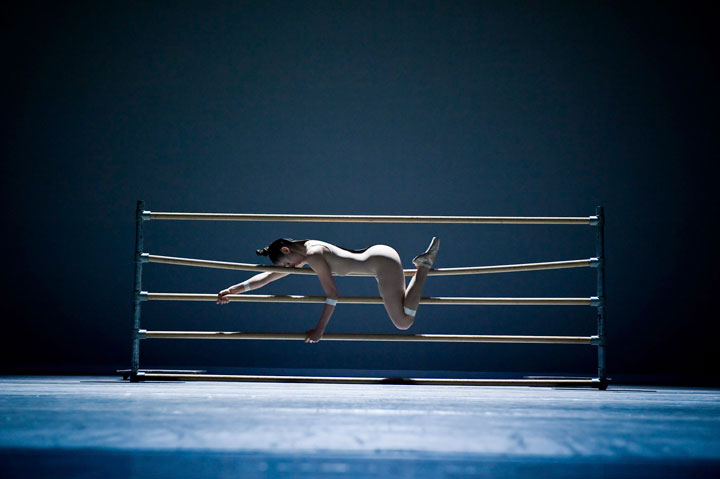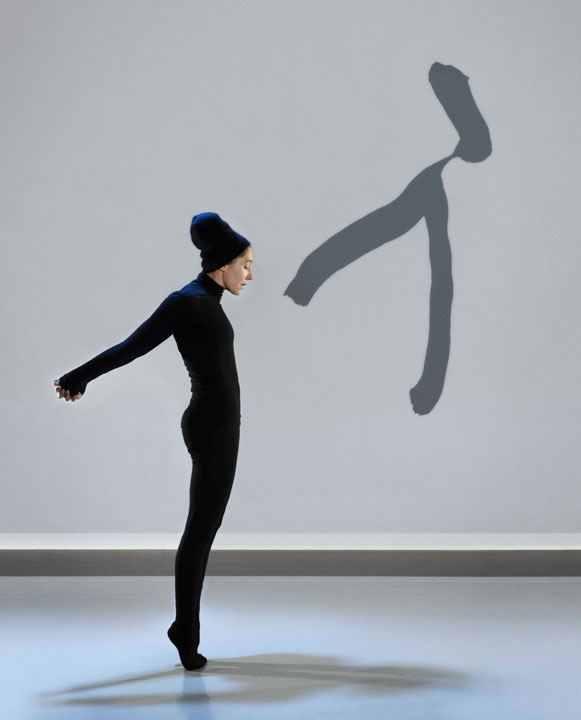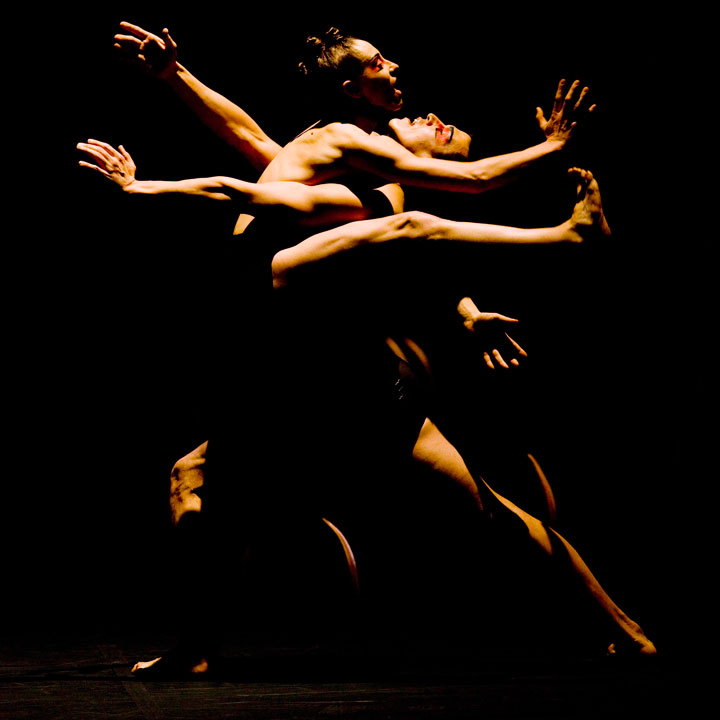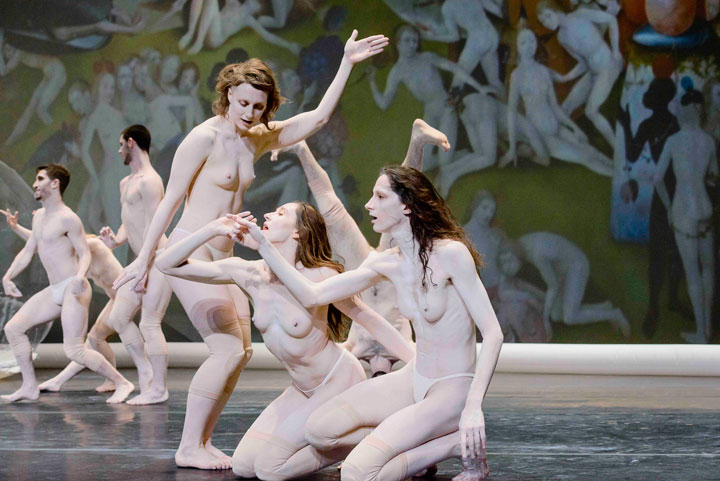 Carole Prieur ist seit 1995 festes Mitglied der in Montreal ansässigen Compagnie Marie Chouinard, für die die Choreografin bisher drei Solos kreiert hat. Die Tänzerin wurde für ihre Performances mehrfach ausgezeichnet, 2010 war sie „Tänzerin des Jahres“ bei der Kritikerumfrage des deutschen Magazins „Tanz“. Anlässlich der Aufführung Marie Chouinards „The Garden of Earthly Delights” im Opernhaus Bonn sprach Carol Prieur über ihre langjährige Zusammenarbeit mit Marie Chouinard und ihrem Ensemble.
Carole Prieur ist seit 1995 festes Mitglied der in Montreal ansässigen Compagnie Marie Chouinard, für die die Choreografin bisher drei Solos kreiert hat. Die Tänzerin wurde für ihre Performances mehrfach ausgezeichnet, 2010 war sie „Tänzerin des Jahres“ bei der Kritikerumfrage des deutschen Magazins „Tanz“. Anlässlich der Aufführung Marie Chouinards „The Garden of Earthly Delights” im Opernhaus Bonn sprach Carol Prieur über ihre langjährige Zusammenarbeit mit Marie Chouinard und ihrem Ensemble.
Ingo Schäfer: Carol, you are a member of the Compagnie Marie Chouinard for more than 20 years now. What distinguishes this company and what is it like to be a part of it for such a long period of time.
Carol Prieur: I had seen the company perform when I was in school and when I had seen them on stage it was a work that had hit me and it connected with me and I knew that was something I had to do. It was something that I understood on a level that was beyond me, that I couldn’t explain. There was something I understood beyond words and I thought that’s something that speaks to me. I can’t necessarily name that but it was really something that hit me.
When I had entered into the company it was just a journey and an adventure. The beginning was always in that unknown place of discovery and of following Marie on her adventure and her sort of quest, to put forth in movement the expression of her ideas and to be that vehicle.
Now this is the 23rd year with the Compagnie and it feels like yesterday, it feels like I have just started, like I’m still in that unknown, that I still don’t know what I’m doing. And I think that this is why I’m still here and the fact that Marie allows for the constant evolution and the constant sort of metamorphoses and research where you never arrive at a final place. There isn’t that final place. There is always something beyond.
 How would you describe your personal style of dancing?
How would you describe your personal style of dancing?
That’s a very hard question, especially after being within a company and being a vehicle for Marie Chouinard. Marie has a very specific style and a vocabulary and that’s being part of my whole years. The past 23 years has been trying to assimilate within that.
I think that what I am able to bring is my perspective on life, my humanity, my rhythm, maybe my awkwardness. For sure my passion, my love for what it is that I am doing. If you would ask me to dance something that wasn’t Marie Chouinard I think that would be the lines, that sort of merges where my boundaries and the beginning of her work and her style is. There is a blur there and I think that as much as I have bled into her work that her work has bled into me. So there is that influence that goes back and forth, that she can be inspired by my passion and by maybe a fluidity I have, an emotional quality, a theatricality that I maybe bring. And then she also pushes me in directions that are very much her work.
How must a choreography be designed to be inspiring and challenging for you?
I really enter into each creative process with Marie like I have no idea what’s going to happen and that’s the fun. I allow myself that challenge of being in just a blank slate and of not necessarily trying to do something that I already know but maybe to step into what Marie is researching. It’s even maybe just trying to be as honest as I can be in that moment. And whether it’s full out energy, whether I’m exploding or a moment that is more internal. Whether that’s dealing with a physicality that maybe is restricted because of an injury or that all of that becomes part of that moment of just being very truthful to what is the reality of the moment and then being able to offer that. And that’s the whole research and I think that we do that all the way through our life as a dancer. Especially when you are working with a choreographer like Marie, who is constantly researching. She doesn’t necessarily always know where she wants to go either and so being that open possibilities allows for that creative space to just go in whatever direction.
 To what extend do you have opportunities to include improvisation into the choreography?
To what extend do you have opportunities to include improvisation into the choreography?
Well at the beginning of a research period is when we really have that open playtime. It’s like having a lake or a pool and you just dive into that ocean and whatever sort of ideas are coming up. Feelings and sensations and all of that becomes just material and it’s endless, it’s infinite. And then as the choreography, the creative process develops it becomes more and more refined and more and more structured and that’s when we find ourselves within systems and within flavors and colors and textures that we have to honor because that’s the writing, that’s the music, the score. And every now and then there is that possibility of being, maybe reading it a little differently or feeling it a little differently.
What’s very important is that the overall picture is still being read properly by the audience. So if we were to go off in all sorts of directions we stay within a line, within a track to make sure that what is being said is being said within that choreography.
And then in another choreography it’s gonna be another conversation that we are having. And it really does depend on the pieces. In some pieces we have a little bit more freedom for that individual expression to be present in the movement and in other choreographies it’s more restraint.
 Please tell us about your performance in "The Garden of Earthly Delights". What does Bosch's painting mean to you?
Please tell us about your performance in "The Garden of Earthly Delights". What does Bosch's painting mean to you?
Bosch is so much fun to perform. When the curtain goes up it is a whole new environment to be in. We start off and there is a unity, a playfulness. There is innocence, there is a sort of lightness and just a joyce, sheer pleasure of movement and of being on stage and being with people.
In the second section we go into hell. And hell is just chaos, pure chaos where we go into. It's so much fun. Once again in another way it’s dirty and sexual and extrem and ugly and we go into these other sides of who we are, the other side, the internal dark side. We are able to bring it out but always with humor. There is such an imagination and we see that within Bosch's work. There is always that presence of it being ludic and that humor and that sort of incredible imagination, of also an awe. An awe of looking at the work and of imagining that somebody, hundreds of years ago was painting these images and having these expressions, that is so telling of today. That we could put them to life today and they still are incredibly representative of our times and of maybe even situations, feelings and relationships.